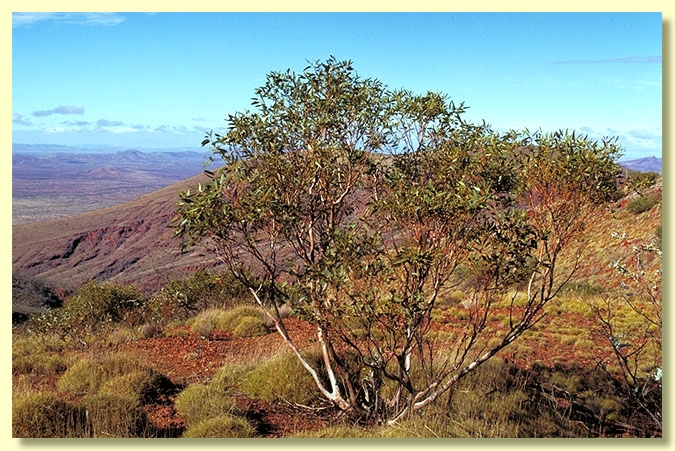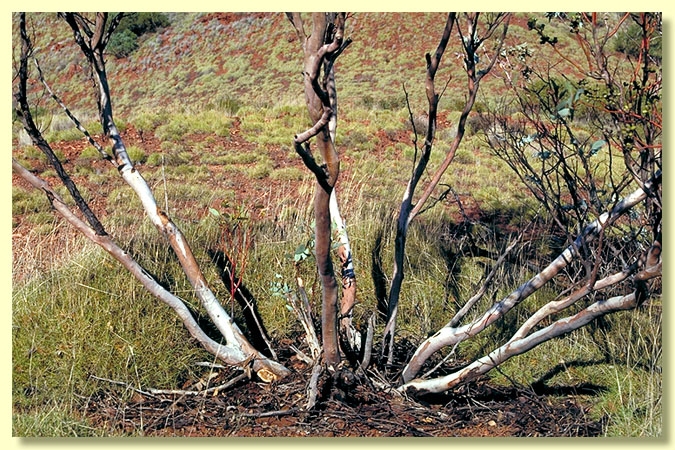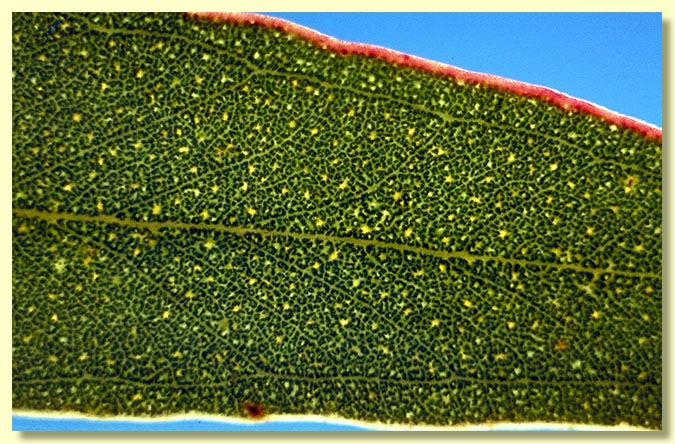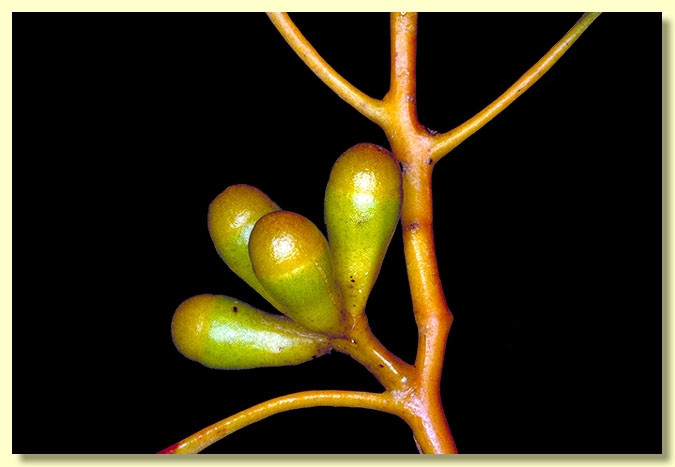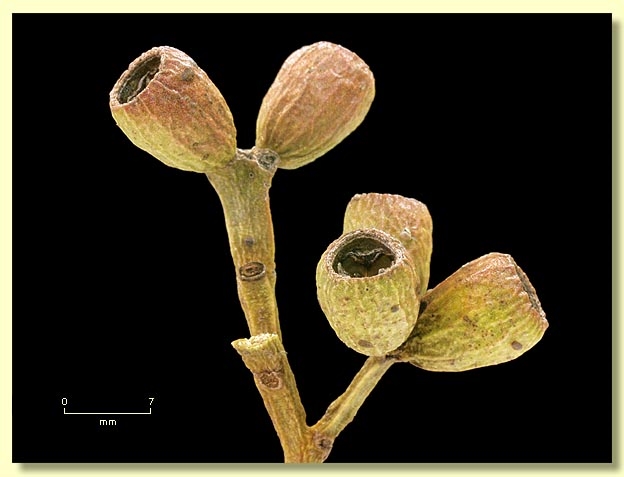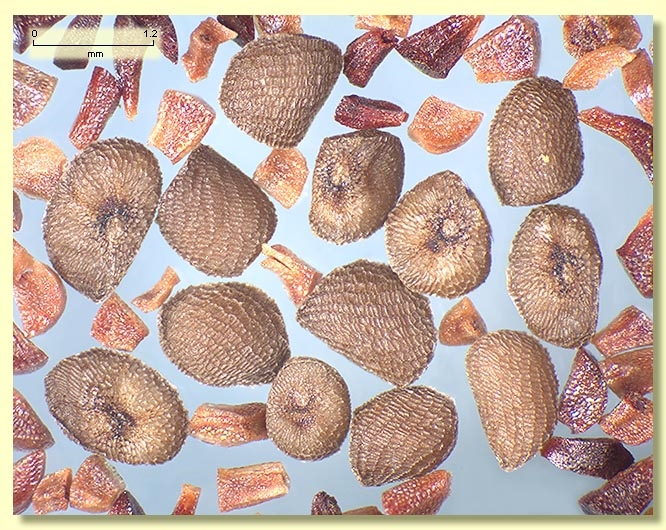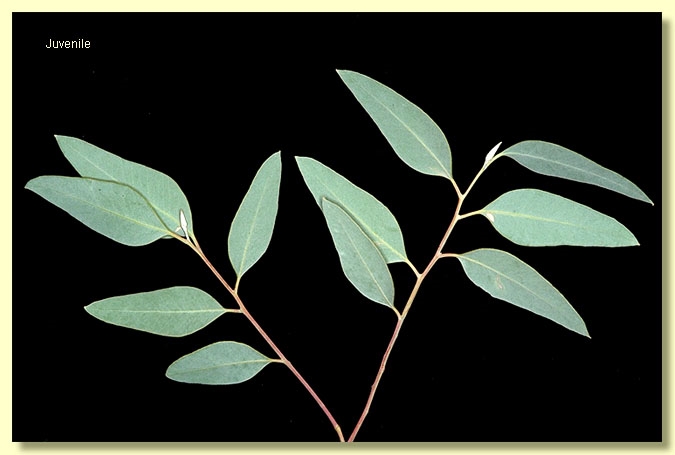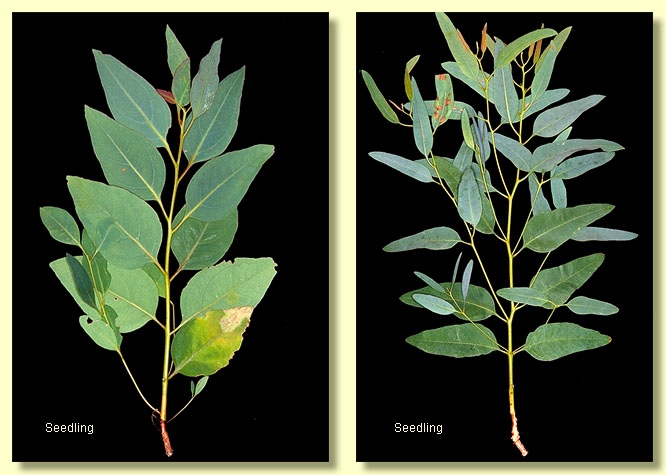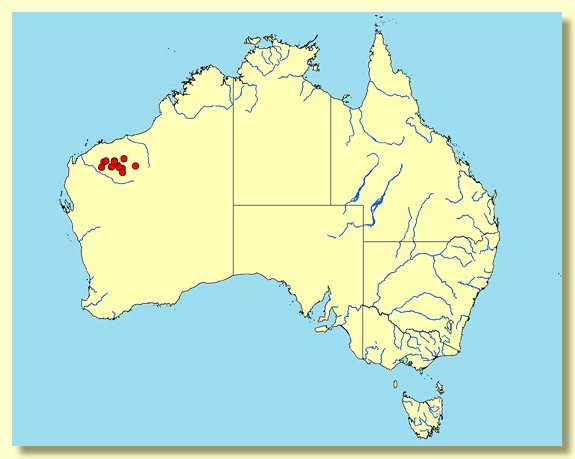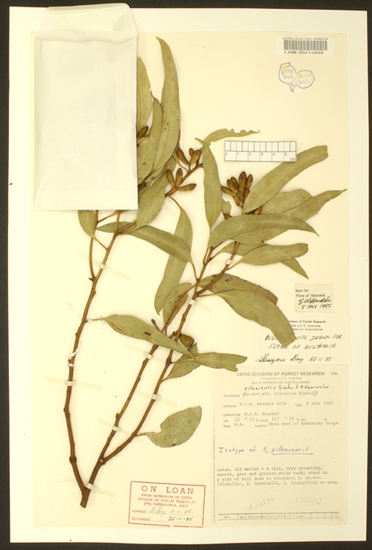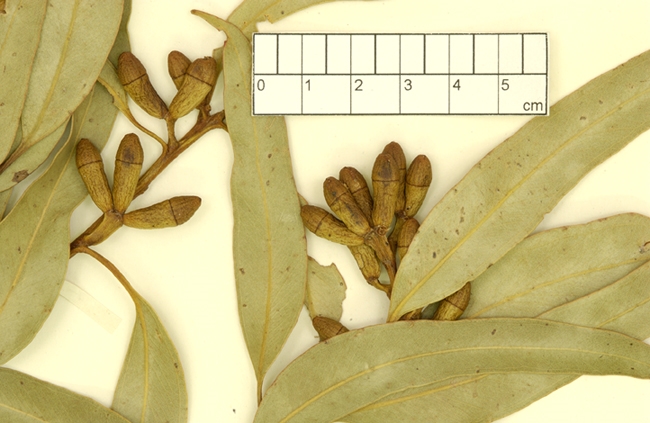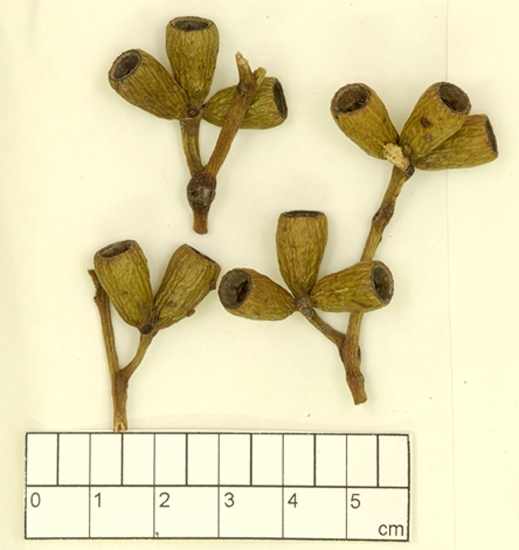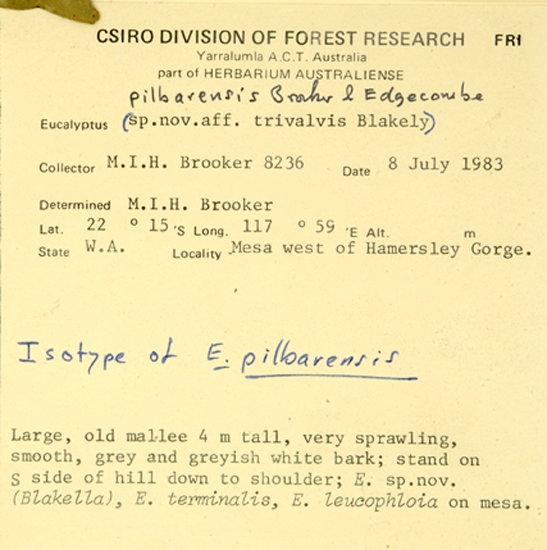Eucalyptus | Symphyomyrtus | Bisectae | Glandulosae | Accedentes
Euclid - Online edition
Eucalyptus pilbarensis
Mallee to 3 m tall, sometimes a low shrub. Forming a lignotuber.
Bark smooth throughout, white and pale grey to pink or coppery.
Branchlets have oil glands in the pith; non-glaucous.
Juvenile growth (coppice or field seedlings to 50 cm): stems rounded in cross-section; juvenile leaves always petiolate, alternate except for lowest pair, broadly lanceolate, ca 5–8 cm long, 2–5 cm wide, green, dull.
Adult leaves alternate, petioles 1–2.3 cm long; blade lanceolate to falcate, 6–11.7(14.7) cm long, (0.7)1–2.2 cm wide, base tapering, margin entire, apex pointed, concolorous, glossy, green, side-veins at less than 45° to midrib, reticulation dense, intramarginal vein present, oil glands island and intersectional.
Inflorescence axillary single, peduncles broadly flattened, 0.3–1.6 cm long, buds 7, sessile or shortly pedicellate (pedicels 0–0.3 cm long). Mature buds cylindrical to elongated-obovate (0.9–1.4 cm long, 0.45–0.6 cm wide), scar present (outer operculum shed early), operculum hemispherical, stamens irregularly flexed to mostly inflexed, all fertile, anthers oblong, basifixed, versatile, dehiscing by longitudinal slits, style long and straight, stigma blunt, locules 3(4), the placentae each with 4 vertical ovule rows. Flowers white.
Fruit sessile or shortly pedicellate (pedicels 0–0.3 cm long), obconical to barrel-shaped or ± cylindrical; 0.8–1.2 cm long, 0.6–0.9 cm wide, disc descending vertically, valves 3(4), enclosed.
Seeds mid-brown, 1–2 mm long, flattened-ovoid, dorsal surface shallowly reticulate, hilum ventral.
Cultivated seedlings (measured at ca node 10): cotyledons Y-shaped (bisected), the lobes moderately broad; stems rounded or square in cross-section; leaves always petiolate, opposite for 4 to 7 nodes then becoming alternate, ovate-lanceolate, 5–9 cm long, 2.2–4 cm wide, base tapering, apex pointed, dull, green.
Flowering has been recorded in March and July.
A mallee endemic to the Pilbara Region of Western Australia, where found on upper slopes and mesa tops, e.g. Mt Nameless, Mt Robinson, above Hamersley Gorge, Mt Bruce, Roy Hill. recognised by having pith glands, glossy green leaves, smooth bark and blunt buds longer than wide and smooth long fruit on flattened peduncles.
Eucalyptus pilbarensis belongs to Eucalyptus subgenus Symphyomyrtus section Bisectae subsection Glandulosae because the cotyledons are bisected, buds have an operculum scar and the branchlets have oil glands in the pith. Within this subsection, E. pilbarensis belongs to a small subgroup of eight species, series Accedentes, further characterised by having buds with more or less inflexed stamens, ovules in four rows and juvenile leaves petiolate. The species, all Western Australian endemics, are E. accedens, E. laeliae, E. leprophloia, E. pruiniramis, E. zopherophloia, all of which occur well to the south of the Pilbara region, and E. trivalva and E. prominens, which occur in or near this region.
E. pilbarensis is distinguished from E. trivalva by having green, not glaucous juvenile growth, glossy, not dull, crown leaves, fruit with completely enclosed valves, and buds and fruit on much more broadly flattened peduncles. E. trivalva also usually has some loose rough bark whilst E. pilbarensis is completely smooth-barked.
E. pilbarensis is distinguished from E. prominens in usually having sessile buds and fruit on much broader peduncles, enclosed valves to the fruit and broader juvenile leaves. E. prominens is a mallee species of coastal limestone areas from Kalbarri north to Exmouth, and has some rough bark, exserted valves to the fruit, and in exposed windy areas may be virtually prostrate, whilst maintaining a typical mallee form in less exposed sites.
Eucalyptus pilbarensis: epithet based on the Pilbara geographic region of Western Australia.

